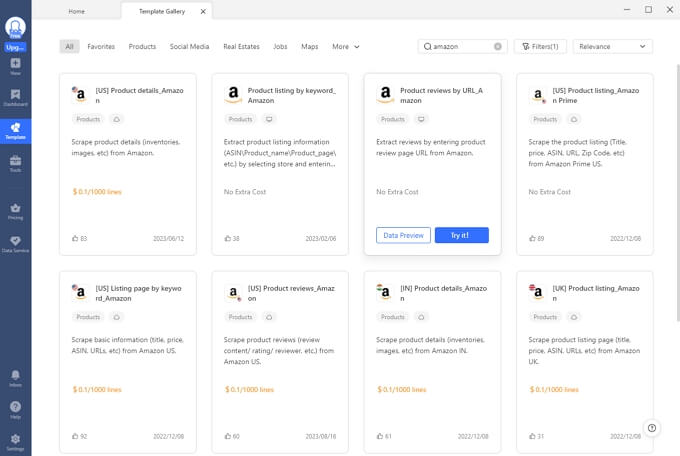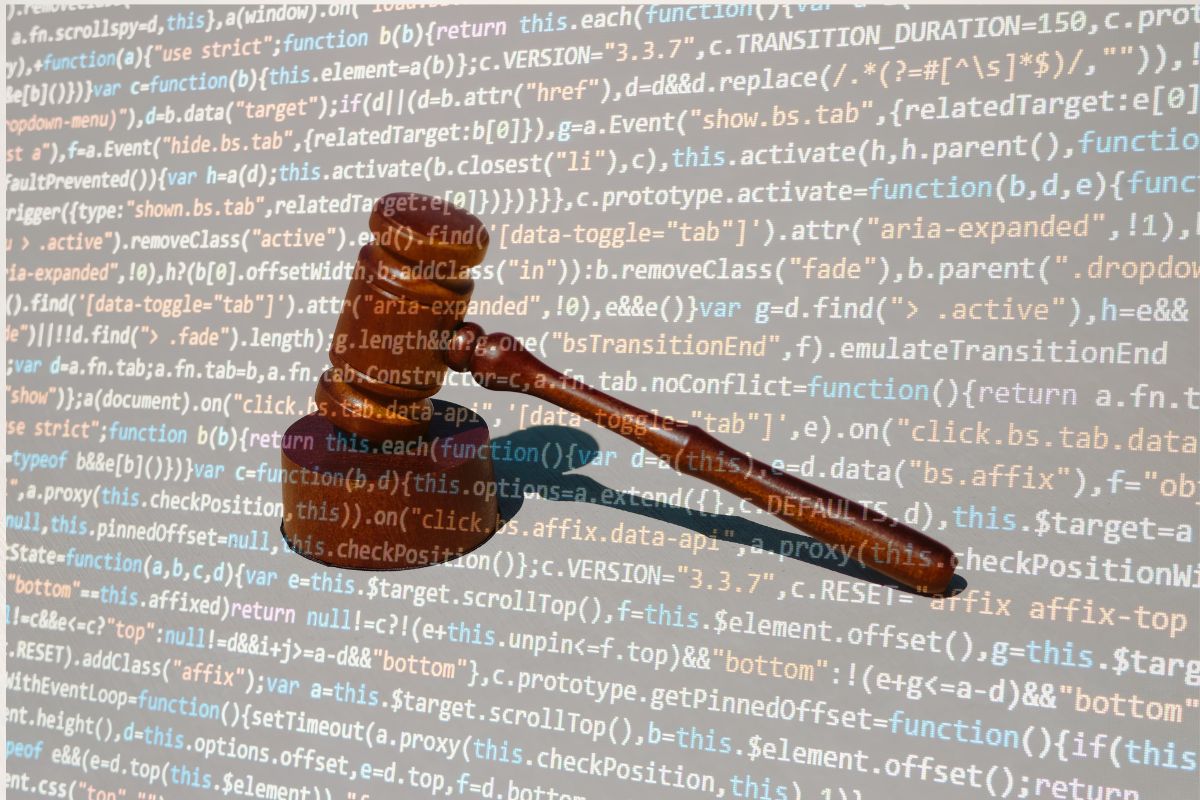Amazon has massive product data ranging from pricing and availability to product details and customer reviews. Access to this rich information could help businesses gain a competitive edge. That’s why Amazon data scraping has become an increasingly common practice for online shop owners to gather useful information from competitors and customers.
However, scraping data from large platforms like Amazon comes with some legal and technical challenges. Amazon also applies diverse anti-scraping measures to monitor and block IP addresses engaged in web scraping.
In this article, we’ll discuss whether it is legal to scrape Amazon data or not, as well as the anti-scraping measures Amazon uses and tips to avoid getting blocked by Amazon while scraping Amazon data.
Is It Legal to Scrape Amazon Data
There is no definitive legal answer on whether scraping Amazon data is legal or not. Many factors can influence the legality of scraping Amazon data. Its legality depends on what data you scrape, how you scrape, how you use the scraped data, Amazon’s Terms of Use, etc.
What data do you scrape
Generally, scraping public product information, such as titles, descriptions, prices, ratings, etc., is legal, whereas scraping private account data will raise privacy concerns. In addition, scraping reviews or other user-generated content might raise additional copyright issues.
You can learn about how to scrape Amazon product data and build a price tracker with an easy-to-use web scraper if you need.
How do you scrape data
Using automated bots or scripts to pull large amounts of data rapidly can strain Amazon’s servers and may be seen as a violation of their Terms of Services. To avoid such a situation and be legally defensible, the ideal strategy to scrape Amazon data is minimizing load and throttling scrape requests.
How to use the scraped Amazon data
Many platforms state in their terms of use that platform data cannot be used for commercial purposes. Don’t worry, using the data for market research, sentiment analysis, competitor analysis, etc., is more likely to be considered a “fair use”.
Amazon’s Terms of Service
Although the TOS is not legally binding, it prohibits some forms of scraping. Violating the TOS might lead to Amazon blocking the IP addresses or other legal action.
Applicable laws
Laws regarding web scraping, data ownership, and copyright vary by jurisdiction. Thus, it is important to learn about applicable laws and similar cases to understand the guidelines on the scraping and usage of data.
What Amazon Has Done to Anti-Scraping
Even though there is no clear guidance about scraping Amazon data from laws or the courts, Amazon has taken a cautious approach and restricted web scraping on its sites. It has implemented various technical measures to detect and prevent unauthorized web scraping on its websites, which leads to some problems you might face while extracting data.
CAPTCHA challenges
On most websites, the CAPTCHA challenge serves as a simple yet effective “Turing test”. As well as distinguishing humans from bots, it can also help reduce load and conserve server resources. Amazon would sometimes present CAPTCHA challenges to detect if a request is coming from an automated bot rather than a human. Scrapers who can not solve CAPCHAS will be blocked and not likely to collect product data on Amazon.
Tips to solve Amazon CAPTCHA while scraping.
Rate limiting
Rate limiting is a technique to control the number of requests that a website or API allows from a single client, such as an IP address or user account. Amazon might employ rate limiting at the IP address level by monitoring the number of requests coming from individual IP addresses and blocking IPs that make an abnormal volume of requests, or at the user level by rate limiting the number of API calls or page views associated with individual user accounts.
IP addresses blocking
Blocking IP addresses is used as a last resort by Amazon. It may choose to permanently block the IP addresses of scrapers that persist after measures.
Besides these measures, there are other techniques like robot.txt file and browser fingerprinting that are used for anti-web-scraping. On the ground, Amazon might combine some of them to improve the efficiency in testing and blocking bots, which makes scraping Amazon data more challenging for most people.
Use Amazon API to Scrape Data
Amazon official APIs are one of the recommended tools to gather and interact with Amazon data with low risk in legal issues. Amazon has a suite of APIs for developers to access its products and services. If you are familiar with coding or webpage development, you can consider applying APIs like Product Advertising API and Product Search API to your business.
You can build a Product Advertising API application to access a lot of the data used by Amazon, including items, customer reviews, seller reviews, etc., and most of the functionality on Amazon, such as finding products. With this API, you can take advantage of Amazon data and realize financial gains. More importantly, Product Advertising API is free.
Product Search API is another application that can get data about products available to Amazon Business customers. The information it can access includes the product title, the merchant selling the product, and the current price.
Using Amazon APIs is a safe way to avoid getting blocked. But it requires coding knowledge and skills. For people who have zero skills in programming, no-code web scraping tools are more acceptable and easier to use. There are many tools that have upgraded their features to avoid being blocked.
How to Avoid Getting Blocked When Scraping Amazon
As mentioned above, Amazon applied diverse techniques to anti-scraping. A web scraping tool aims to improve the efficiency of Amazon scraping, but it needs to handle these problems. Taking Octoparse as an example, it is a no-code web scraping tool for anyone to build an Amazon scraper without getting blocked by Amazon.
Turn website data into structured Excel, CSV, Google Sheets, and your database directly.
Scrape data easily with auto-detecting functions, no coding skills are required.
Preset scraping templates for hot websites to get data in clicks.
Never get blocked with IP proxies and advanced API.
Cloud service to schedule data scraping at any time you want.
For non-coders, you can also choose the Amazon scraping templates provided by Octoparse, product listings, reviews, prices, and other data are all included. With these templates, you can avoid the anti-scraping problems and extract data within a few clicks. Visit Octoparse online scraping templates, or search the keyword Amazon after you have installed Octoparse on your device.

Resolve CAPTCHA
Modern CAPTCHAs fall into four main categories, including text-based, image-based, audio-based, and no CAPTCHA reCAPTCHA. Octoparse can currently handle some CAPTCHA automatically: reCAPTCHA v2, and Image CAPTCHA.
reCAPTCHA v2 asks users to select “I am human” or “I’m not a robot.” It also answers some simple questions while visiting the platforms. When you build a scraper with Octoparse, you can add a step “Solve CAPTCHA” in the workflow and select reCAPTCHA v2 as the CAPTCHA type. Then, Octoparse will handle the CAPTCHA and scrape data without interruption after the scraper launches.
Compared with reCAPTCHA v2, solving Image CAPTCHA is a bit complicated because it can use known words or phrases or random combinations of digits and letters. There is not a particular and consistent solution to solve this kind of CAPTCHA. It uses a solving failure way to train the scraper to solve this kind of CAPTCHAs in Octoparse.
Use IP rotation
Amazon applies high-security measures to recognize and block web scrapers. If you have not done web scraping responsibly on Amazon, your IP addresses might be blocked, leading to failure to collect information. To reduce the chance of being blocked, you can use the anti-blocking solutions on Octoparse to modify your Amazon scrapers.
For instance, you can set up IP proxies manually in Octoparse. Octoparse does provide residential IPs that can work better in avoiding being blocked, or you can set up IP proxies to access your own IP into Octoparse. Both methods can help your scrapers escape the anti-scraping techniques to some extent.
Besides CAPTCHA and IP blocking, you may also encounter other anti-scraping techniques depending on the situation. You can try the user agent settings and auto-clear cookies features on Octoparse to optimize the sustainability of your scrapers.
Conclusion
There are many legal considerations about scraping Amazon data and using the data. Amazon’s anti-scraping techniques also make scraping Amazon data more challenging. To ensure the legitimacy and sustainability of Amazon scrapers, you should take all these factors into account.
Amazon’s official APIs can be a good choice, while building an Amazon scraper with Octoparse is effortless. It also provides anti-blocking solutions that anyone can use with zero coding skills to make an effective and sustainable Amazon scraper. Try Octoparse now. More solutions for web scraping are here for you.




